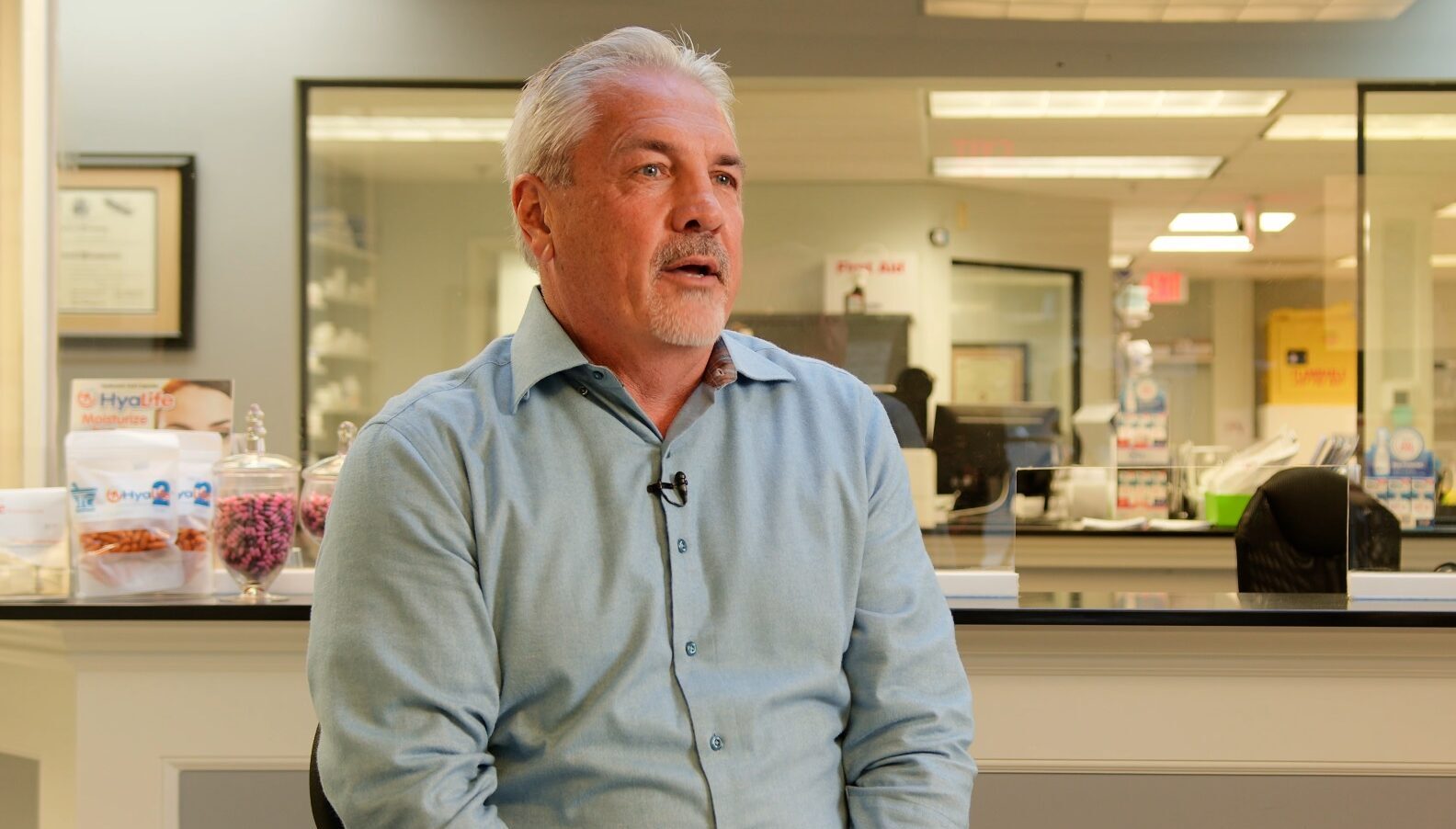Where you get your medicine compounded makes a big difference in your health outcomes.
Town & Country Compounding makes customized medicine to the highest standards.
Experts in Sterile Compounded Ophthalmic Prescriptions

Take a tour of our high-tech sterile compounding labs.
Compounded Sterile Ophthalmic Medications for Surgery Centers and Ophthalmology
- Lidocaine + epinephrine injection HIGH DEMAND
- Lidocaine injection – backordered strengths
- Sterile alcohol injection
Intravitreal Injection Examples
- Ganciclovir
- Amikacin
- Clindamycin
- Dexamethasone
- Methotrexate
- Vancomycin
- Voriconazole
- Ceftazidime
- Amphotericin B
- tPA
Other Ophthalmic Compounds
- Brilliant blue
- PF Tropicamide
- Losartan
- Betadine syringes (single unit dose)
- Mitomycin
- Phenylephrine /tropicamide / ofloxacin /tetracaine / flurbiprofen syringes(P10 eyedrops) or custom combinations
- Lidocaine /epinephrine / BSS (Shugarcaine) syringes or vials
Sterile Compounding Labs for Eye Medications
Town & Country Compounding specializes in a number of sterile eye drops
Town & Country Compounding compounds the high quality sterile compounds your patients need. Whether the compounds are needed for surgical procedure, serious infections or drops that are used daily, we compound the quality they deserve.
Atropine Eye Drops (Low-Dose For Pediatric Patients)
Related blog: Atropine Eye Drops for Children with Nearsightedness (Myopia) >>
The strength of eyedrops needed for children with myopia is not commercially available. A compounding pharmacist can use the higher-strength commercial product and dilute it for the pediatric patient. This is done only in a sterile compounding lab.
Sometimes a patient needs a compounded medication to be administered at the surgery center for a procedure.
*These are compounded with a prescription for a specific patient
Autologous Serum Eye Drops (ASED)
Autologous serum eyedrops are often requested when patients have not had success with various medications for chronic dry eyes. Their own serum is used to make their eyedrops.
How Autologous Serum Eyedrops (ASED) Work
Conventional therapies for severe dry eyes fail to heal the epithelial cells, which are the cells on the top layer of the cornea. The dry epithelial cells sometimes fall off of the cornea easily. Autologous serum comes from the patient’s own blood serum and plasma (Source: clevelandclinic.org).
The fluid contains epithelium-promoting growth factors and becomes a good replacement for tears.
Sjogren’s syndrome is an inflammatory condition in which the mucous membranes, especially in the nose and mouth become very dry. Sometimes you will see this in patients who have rheumatoid arthritis and lupus.
Autologous serum eyedrops (ASED) are thought to contain various growth factors and nutrients from the serum that benefit the surface of the eye and may help with corneal epithelial defects. Serum contains albumin, vitamin A, and nerve and epidermal growth factors that may promote healthy growth and healing of the ocular surface. These nutrients are not in over-the-counter artificial tears preparations.
They are sometimes used by doctors with patients with neuropathic eye pain, keratitis and may also be used before and after certain high-risk corneal transplants and SLET procedures, or for post-vitrectomy diabetics.
More About Autologous Serum Eye Drops (Step-by-step Guide) >>
Read More:
Fortified Antibiotic Eye Drops
Eyedrops are often needed at a higher strength than what is commercially available for certain conditions and therefore, must be prepared by a compounding pharmacy. Often, the alternative to fortified ophthalmic drops is hospitalization and Intravenous infusions. It is important to get these eyedrops to the patient very quickly when needed!
“Timely intervention will help the most resistant microbial keratitis and prevent the need for surgical intervention”
The conditions that may require fortified eyedrops:
- Resistant microbial keratitis – This diagnosis is considered an emergency situation.The infection can progress rapidly and can progress quickly and can cause permanent damage that decreases vision. Around 30,000 cases of microbial keratitis occur annually in the U.S.
- Corneal ulcers
- Bacterial infections on the ocular surface
Read more:
– Common Eye Infections
– The Pharmacist’s Role in Managing Microbial Keratitis
Commonly prescribed eye drops
Tobramycin Fortified Ophthalmic Solution
- We can compound strengths 13 mg/mL-15 mg/mL (BUD = 14 days)
- Refrigeration Required
Vancomycin Fortified Ophthalmic Solution
- We can compound strengths 12.5 mg/mL, 14 mg/mL, 25 mg/mL, 50 mg/mL (BUD = 14 days)
- Refrigeration Required
Other anti-microbial ophthalmic medications:
- Amikacin (2.5%)
- Cefazolin (50 mg/mL)
- Ceftazidime (5%)
- Chlorhexidine Digluconate (0.02% – 1%)
- Polyhexamethylene Biguanide (PHMB) (0.02%)
- Voriconazole (0.1 – 1%)
Additional ophthalmic medications we commonly compound:
- Acetylcysteine (5%, 10%)
- Albumin (4%, 5%)
- Atropine (0.01%, 0.02%, 0.025%, 0.1%, 0.125%)
- Cyclosporin MCT (0.1%-0.5%, 1%, 2%)
- Dexamethasone (0.01%, 0.1%)
- Edetate Disodium (EDTA) (1%, 2%, 3%)
- Glycerin (50%)
- Mitomycin (0.02% – 0.04%)
- Prednisolone (1%)
- Timolol (0.5%)
Sending prescriptions to
Town & Country Compounding
It’s easy for licensed practitioners to prescribe medications for patients using Town & Country Compounding.

